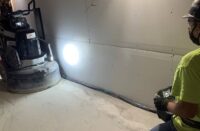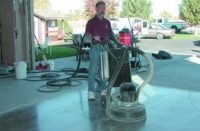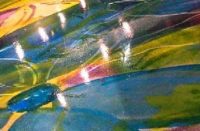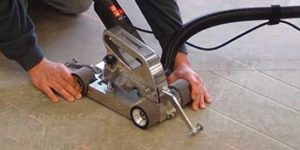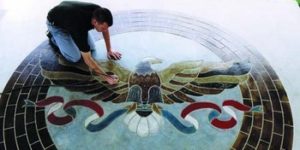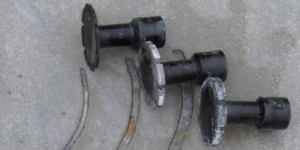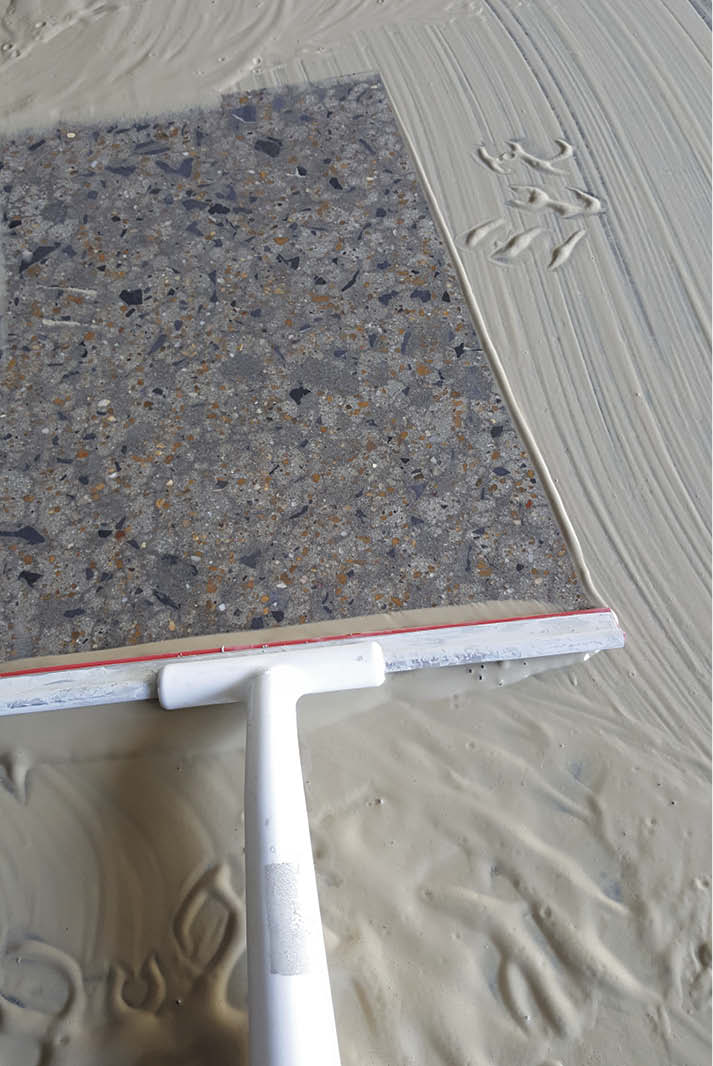
Chemical surfactants such as Prosoco’s Consolideck First Cut and KickStart Clarity Enhancer from Curecrete Distribution’s Retroplate System can boost productivity and improve results in the early grind stages of concrete polishing projects.
David Stratton, president of Pacific Decorative Concrete in Sacramento, says there are two main reasons contractors use such products in the early stages of polishing and grinding. “Because the concrete surface is very dense and hard and they’re having trouble getting a first cut on it, they’ll use something they think is going to soften the slab and make it easier to cut,” he says.
Either that, he continues, or “Because they’re going to grind wet anyway. So they’re planning on having a sheet of water on the floor and they want to add a chemical to it to enhance the cutting process and make cleanup easier.”
When dealing with hard concrete surfaces that have been burned or over-power troweled, Stratton will use a product like KickStart as a cutting agent.
“If you want to break up or soften the surface a little bit you’re going to want to put down a solution that probably has a little bit of acid in it and will etch the surface of the concrete,” he says.
When working on dense, hard slabs, Brent Schmiegelow, president of American Concrete Concepts Inc. in Conway, Arkansas, says, “When you put KickStart on the floor it really adds to your ability to cut hard concrete. It’s probably two or three times as effective as just straight water on the floor.”
Productivity boost
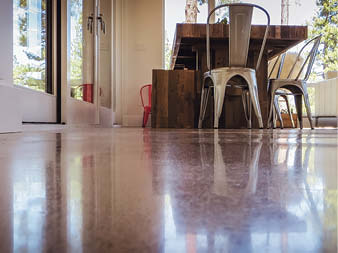
First Cut, a similar product from Prosoco, is touted to reduce labor and tooling costs.
“Wet grinding creates a large mess of slurry. The diamond tooling spends time fighting through the slurry instead of maintaining constant contact with the concrete,” says Nick Savage, business unit leader of Prosoco’s Concrete Flooring Group. “First Cut will lift and keep that slurry away and keep the tooling on the surface. It will increase efficiency and reduce cleanup time between steps.”
Stratton explains the slurry advantage of products like First Cut this way: “It’s simply keeping particles in suspension. They’re floating to the surface of the solution so they’re not landing on the (solid) surface you want to grind,” he says.
“It gives your diamonds a good path to the concrete. It makes the process more efficient because you’re providing a little lubricant for your diamonds and the surfactant is keeping all of the slurry suspended so it makes cleanup easier.”
Less scratches to deal with
KickStart offers accelerated and enhanced clarity to hard steel-troweled concrete in fewer grinding and polishing steps, maintains Peter Wagner, director of supporting products development for Curecrete. He says it’s an integral part of what most manufacturers refer to as a three-step system, and scratch resistance is one of the features leading to step reduction.
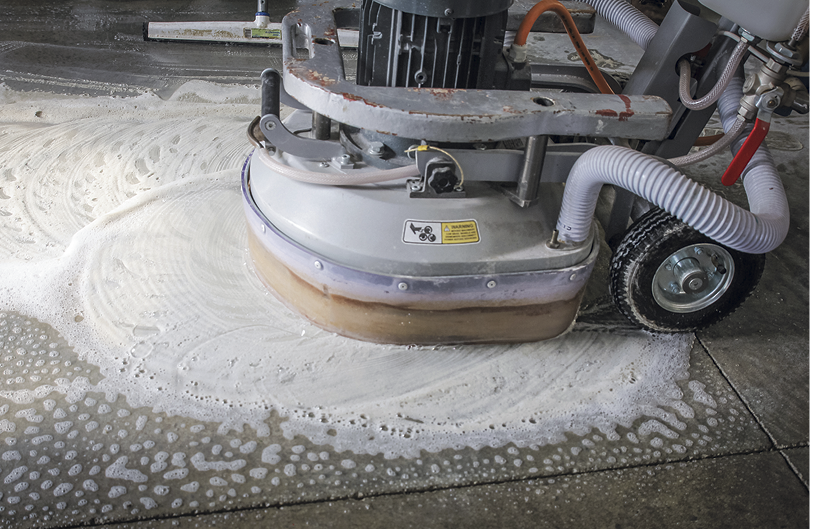
“Normally, when you have a metal matrix, you’d have to have a step with a 200 hybrid to get a scratch pattern out,” Wagner says. “But KickStart creates a finer scratch pattern, so there are fewer steps.”
ACCI’s Schmiegelow puts it this way regarding use of either chemical. Anytime you use a metal diamond on a concrete floor you scratch the surface. So, “Any scratch you don’t put in is a scratch you don’t have to get out.”
Wagner goes on to explain that a typical grind and polish might take seven or eight steps, but KickStart can cut the process roughly in half on some jobs.
“For a salt-and-pepper look, ours has been shown to produce the appearance in three steps over 90 percent of the time. We’re talking about the first step being a 200 metal-diamond grind. And the next step jumps to a 400-hybrid matrix (aluminum or copper combined with a resin), and then generally a resin grind. KickStart is utilized for both of those first two steps.”
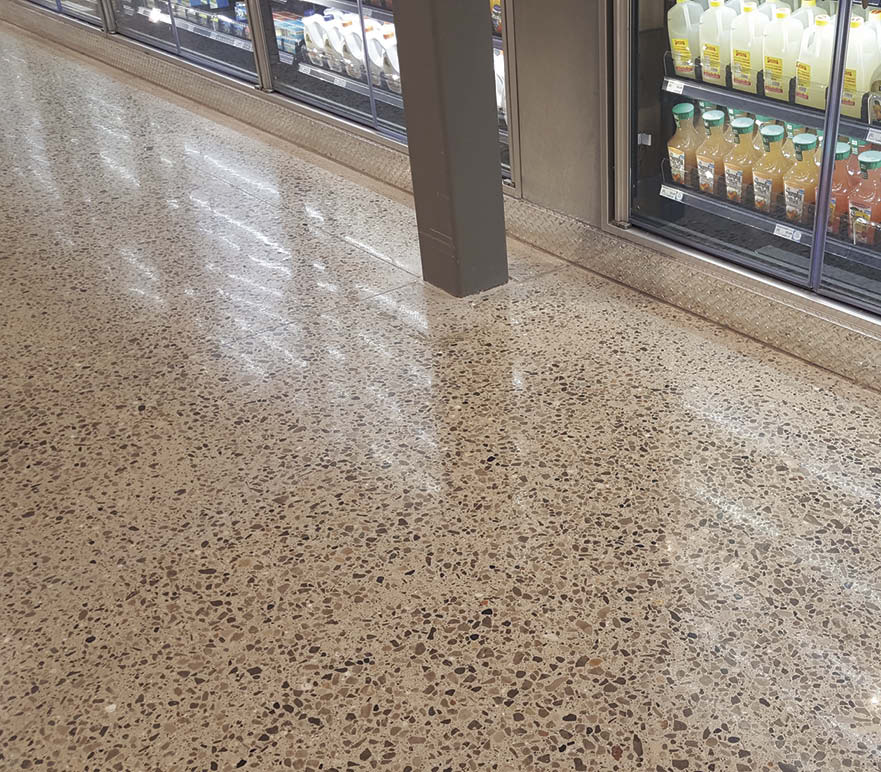
Wet and dry benefits
Beyond enhanced productivity, Pacific Decorative Concrete’s Stratton says, there’s yet another reason to use these chemicals. OSHA tracks and regulates silica dust on construction sites, and “These products are one way of managing the dust in the slurry.”
Wet grinding with products like First Cut and KickStart is especially appealing for large-footprint concrete polishing projects of 100,000-plus square feet “because it can allow a faster grind and increase productivity, reducing costs,” says Stratton.
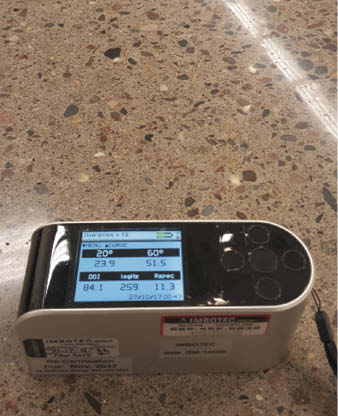
“Anything you can use to get you a higher-grit diamond to work is incredibly effective in terms of speed and productivity,” says ACI’s Schmiegelow.
He prefers dry grinding, but works wet and uses these initial-cut aides when the surface is particularly hard and he’s got room to deal with the sludge. “When you put this stuff down, it’s a mess. You’ll have a quarter-inch of slurry on the floor, so it’s a commitment to use it.”
Products like KickStart offer dry grinding advantages, too, Curecrete’s Wagner says.
“If you’re grinding dry you have heat buildup. So the use of KickStart allows the contractor to eliminate or minimize the grouting process because it lubricates and cools the tooling,” he says. “This helps avoid pulling out close-to-the-surface aggregate, which you’d have to regrout after.”
Ease of application
Both products could hardly be easier to use, Schmiegelow and Stratton contend. Simply follow label instructions and apply on a clean slab.
Schmiegelow usually uses a 50-50 mix with water. “There’s no special equipment required. Put it down and you can generally start at one step higher diamond grit than you normally would,” he says.
“(Either) product foams a little and will mix with your concrete and form a slurry. Just keep shoving it forward as you’re grinding and reuse the material. It serves as a lubricant and seems to keep the diamonds open, more than anything else,” Schmiegelow says.
Prosoco’s Savage says of First Cut, “Wet the concrete first with water and then spray or pour First Cut and spread it with a soft push broom or squeegee. Spread it evenly across the floor and grind along the top of it.”
Of KickStart, Wagner says it comes ready to use and has a coverage rate of about 400 square feet per gallon. “Just put it down on the floor and broom it around. Add a little water during the initial cutting to build up a slurry. If you’re working a soft slab and picking up a lot of sand and sediment, remove the heavy slurry between diamonds.”
Stratton likes to use a Hudson-type sprayer to apply the cutting agent chemical and recommends letting it sit for up to 30 minutes if you can spare the time.
Easy application, faster, hassle-free grinding, less scratching and better polishing results are all good reasons to consider a surfactant like First Cut and KickStart. That’s why, says Schmiegelow, “It’s on every truck.”
